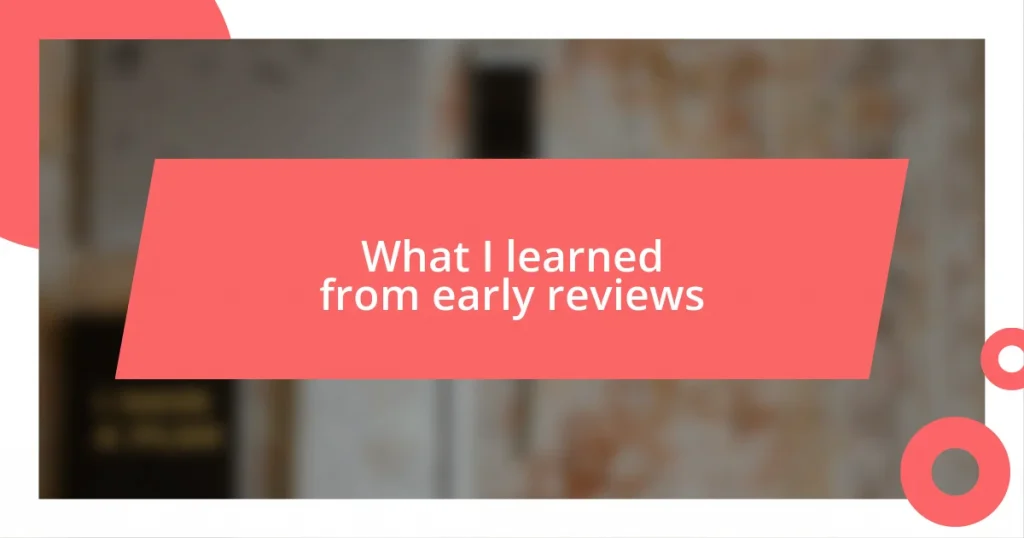Key takeaways:
- Parody films use exaggeration and familiar tropes to create humor, providing commentary on the original works while fostering a shared experience among viewers.
- Personal connections to parody content enhance enjoyment, as they often reflect audience quirks and societal norms, making the humor relatable and meaningful.
- Creating parody content engages creativity and allows for exploration of shared experiences, promoting laughter and community through relatable themes and absurdity.
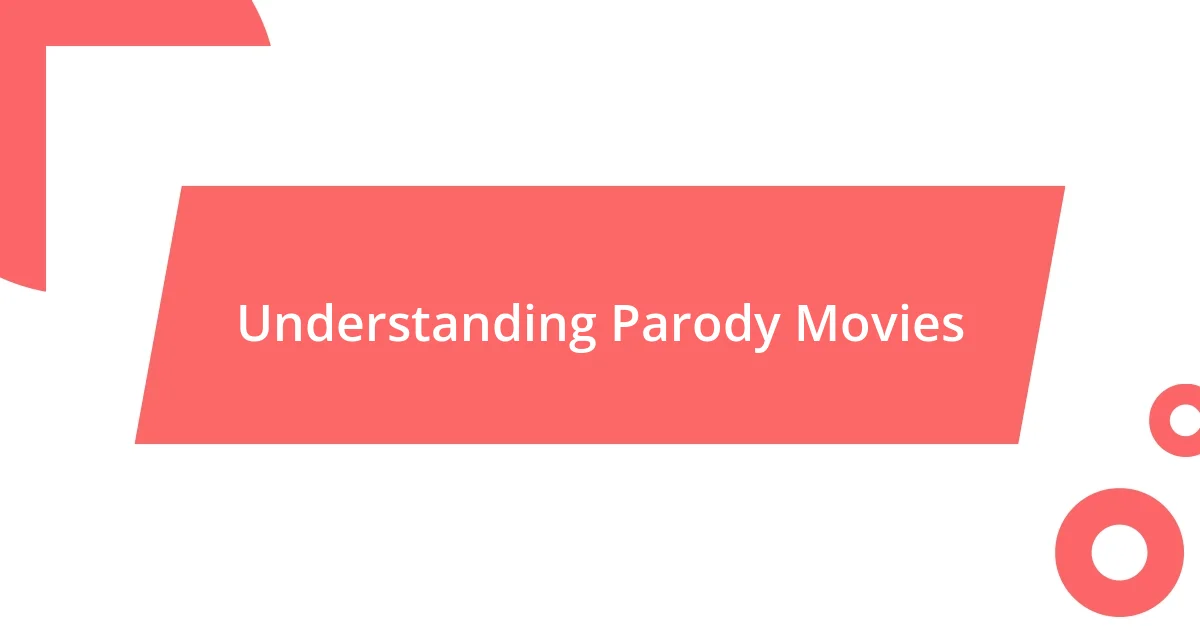
Understanding Parody Movies
Parody movies are a fascinating genre that playfully mimic and exaggerate the conventions of their source material. I remember watching “Airplane!” for the first time, and I found myself laughing out loud, not just at the absurdity of the plot, but at how cleverly it poked fun at the clichés of disaster films. Isn’t it interesting how these films can shine a light on the tropes we often take for granted?
When done right, parody films can be a commentary on the original works, flipping them on their heads while making us think. For instance, watching “Scary Movie” made me realize how predictable horror films can be. It’s almost a shared experience with the audience: don’t we all find those jump scares a bit too obvious?
Furthermore, the beauty of parody lies in its ability to create an instant connection with viewers who are familiar with the source material. I often find myself sharing a knowing glance with a friend during a particularly hilarious spoof moment. This shared experience deepens our enjoyment and appreciation for both the parody and the original film. How does it feel to break down those cinematic walls together, laughing at the familiar?

My Journey with Parody Humor
My journey with parody humor has been nothing short of a delightful ride through the quirks of cinema. I still chuckle thinking about the first time I watched “Not Another Teen Movie.” It was like a treasure chest filled with inside jokes about teenage dramas. I remember nudging my best friend during the absurd moments, feeling this indescribable joy in recognizing all the clichés. There’s a certain thrill in being “in on the joke”—it’s almost as though the filmmakers are winking at us.
- Experiencing the humor so personally allows me to reflect on the absurdities of life.
- It strikes me how parody humor can transform familiar narratives into something hilariously unexpected.
- I can’t help but appreciate the clever writing; every punchline feels like a shared secret among fans.
- Reliving iconic scenes with friends is where the magic of parody truly shines.
- Engaging with parody movies creates a unique camaraderie, uniting those who’ve navigated the tropes together.

Key Elements of Parody Films
The success of parody films often hinges on their clever use of exaggeration. I vividly recall watching “Austin Powers” and how the character’s outlandish fashion choices and exaggerated mannerisms made me laugh while simultaneously reminding me of the spy genres they were spoofing. Exaggeration allows for a playful exploration of absurdity, often leading us to see the inherent silliness in serious contexts. Isn’t it amusing how laughter can sometimes reveal deeper truths?
Another key element is the interplay between familiarity and absurdity. I remember cringing and laughing at “Epic Movie,” where the blend of iconic movie moments was both a nostalgic trip and a fresh take. It struck me how the intertextuality—where one film references another—creates a shared camaraderie among viewers. Do you ever find yourself chuckling at a reference in these films that only a true cinephile would catch?
Lastly, satire plays a vital role in parody films. They often serve as a humorous critique of cultural phenomena. Watching “Meet the Spartans,” I didn’t just laugh; I found myself considering how pop culture shapes our perceptions. This layer of satire adds depth, transforming a simple spoof into a commentary on society, making you ponder while you laugh. How often do you notice the clever commentary woven into the absurdity of these films?
| Key Element | Description |
|---|---|
| Exaggeration | Amplifies characters and situations for comedic effect. |
| Familiarity and Absurdity | Creates humorous connections through recognizable tropes. |
| Satire | Offers insightful commentary on societal norms and pop culture. |

Famous Parody Movies to Watch
I can’t help but reminisce about my first experience with “Airplane!”—a masterclass in parody that left me gasping for breath from laughter. It’s more than just a string of jokes; it’s a clever interweaving of puns and visual gags that transform the disaster movie genre into sheer hilarity. Have you ever considered how that comedic timing can elevate an otherwise predictable plot?
Another film that tickles my fancy is “Spaceballs.” It’s fascinating how Mel Brooks manages to poke fun at sci-fi tropes while simultaneously paying homage to them. I remember watching it with a group of friends, and we found ourselves in stitches, particularly during the ridiculous “Lone Starr” moments. It’s a reminder of how shared laughter can turn a simple movie night into a memorable bonding experience, don’t you think?
Then there’s “Scary Movie,” which shook the horror genre to its core with its over-the-top take on slasher films. Each scene is brimming with ridiculousness that simultaneously critiques classic horror clichés. I’ve often found myself laughing and thinking, “Did that really just happen?” It’s this blend of shock and humor that makes parody films so compelling, transforming familiar fears into hearty chuckles. Isn’t it amazing how a well-executed parody can make us reconsider the narratives we thought we knew?
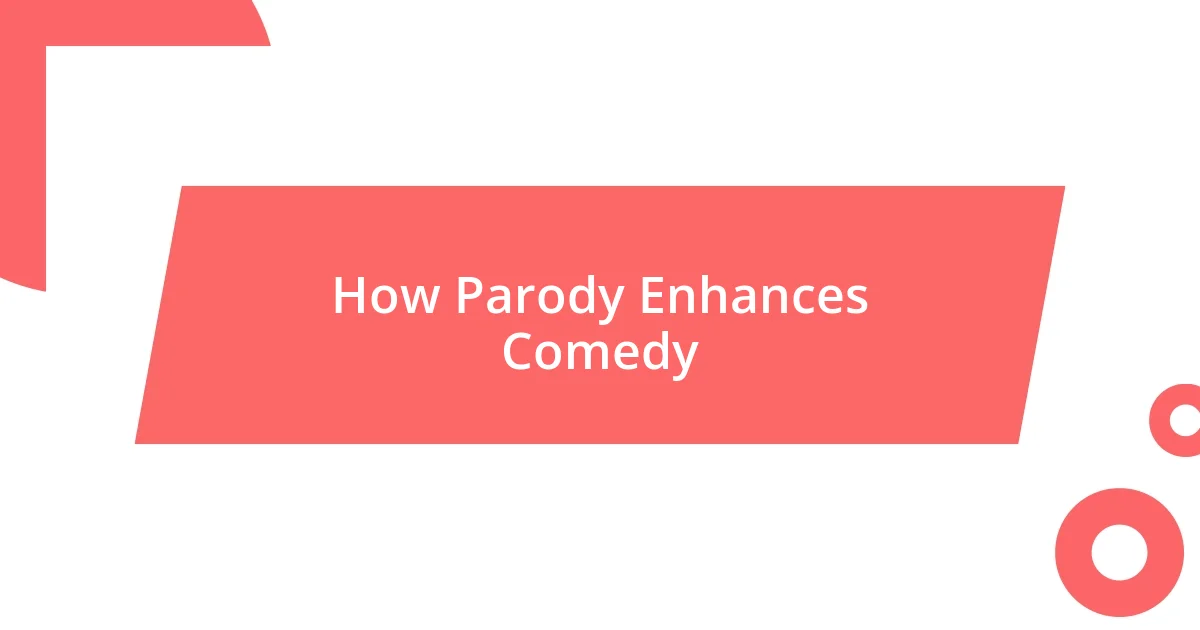
How Parody Enhances Comedy
Parody enhances comedy by cleverly playing with our expectations. I remember watching “Shaun of the Dead” and how it transformed the zombie genre into a laugh fest while still holding on to those iconic horror tropes. The comedy lies in knowing what’s coming next but being surprised by how it’s delivered. Have you felt that rush of laughter when a familiar scene takes an unexpected twist?
Another layer of humor in parody comes from the rich tapestry of cultural references that resonate with audiences. When I revisited “The Hunger Games” parody in “The Starving Games,” the blend of societal commentary and absurd situations had me chuckling at both the silliness and the pointed critique of reality TV. It’s fascinating how these films can highlight societal quirks, making us laugh while nudging us to reflect on their real-world implications. How often do we see our own lives mirrored back to us in such a comical way?
Finally, parody films thrive on the power of nostalgia mixed with absurdity. Watching “Not Another Teen Movie” took me back to my own teenage years, filled with dramatic moments, only to have them exaggerated to the point of hilarity. The nostalgic references create a sense of familiarity that, when paired with outlandish scenarios, makes the humor land even harder. Doesn’t it spark a bizarre joy to see your cherished moments be turned upside down into comedy?
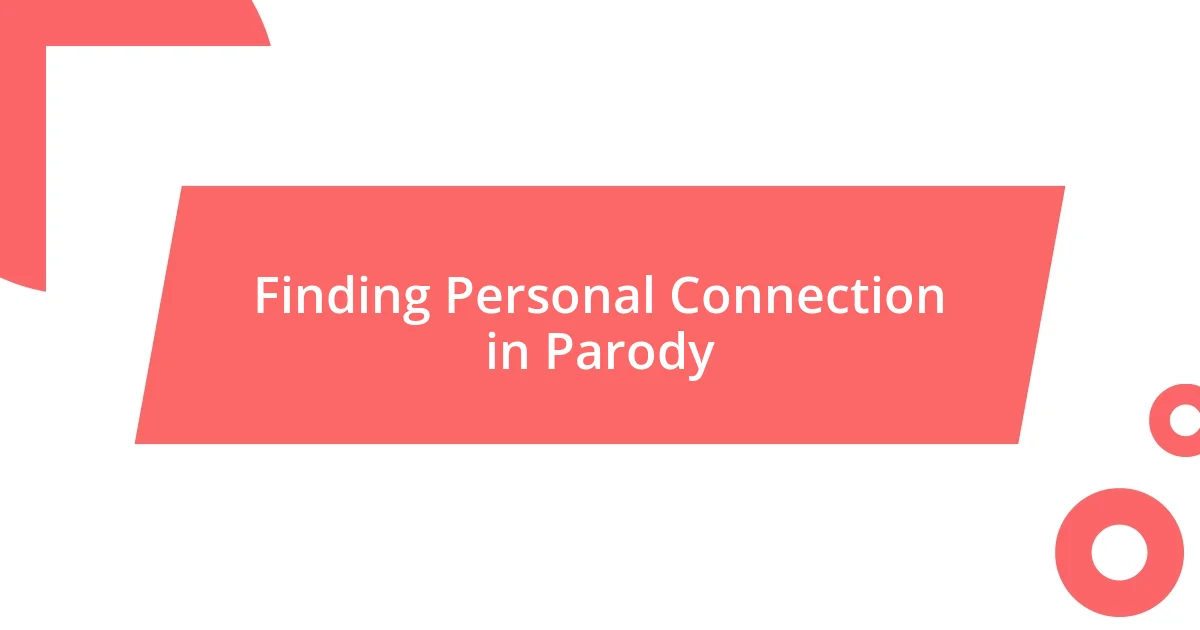
Finding Personal Connection in Parody
Finding personal connection in parody can be a delightful journey. I recall the first time I watched “Not Another Teen Movie” with my siblings, who were navigating their own teenage angst. We laughed at how the film exaggerated everything we held true—the drama, the misunderstandings, even the cringe-worthy prom moments. It felt like we were not just watching a movie but sharing a moment that echoed our own experiences, didn’t it?
There’s something truly special about when a parody film reflects our own quirks and insecurities. For instance, “The 40-Year-Old Virgin” parodied the pressures of adulthood in such a relatable way. I found myself relating to Steve Carell’s character’s awkwardness as he navigated relationships—it was like peering into a funhouse mirror that captured all my own uncertainties. How does it feel to see your life’s little foibles exaggerated on screen? It not only makes you laugh but also helps you embrace those moments with a sense of camaraderie.
I still chuckle thinking about “Airplane!” and how its over-the-top humor made me realize the absurdity of taking life too seriously. Watching it during a tough day lifted my spirits and reminded me how finding laughter in our fears—even in the form of parody—can connect us to those around us. Isn’t it wonderful how humor can bridge personal experiences and create a shared understanding that feels both uplifting and freeing?
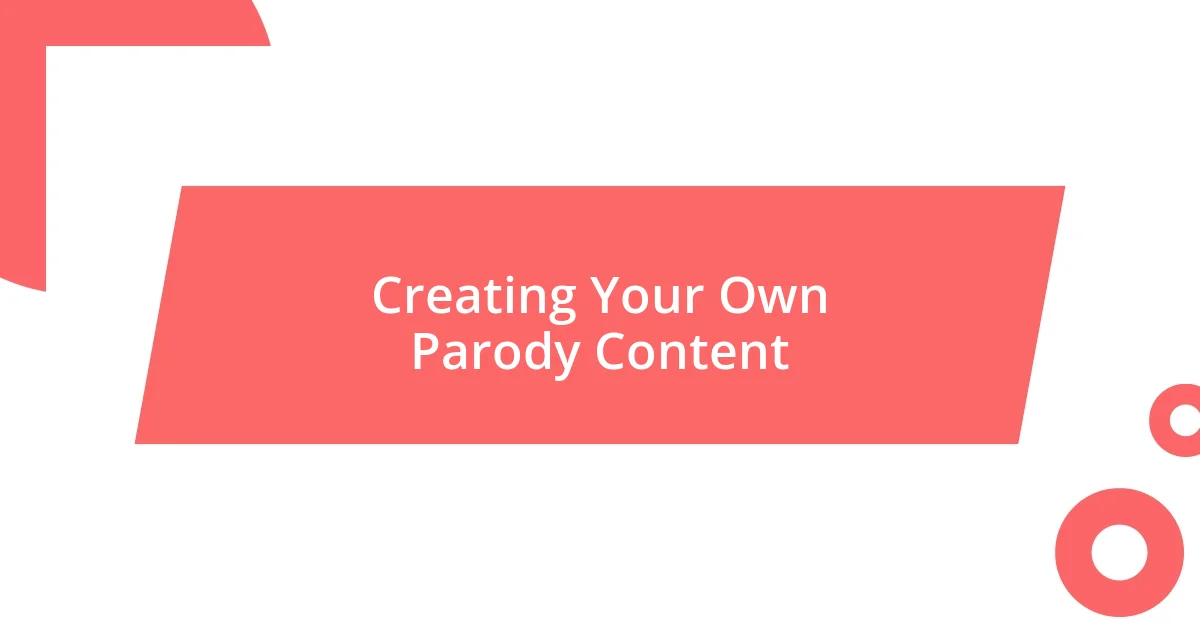
Creating Your Own Parody Content
Creating your own parody content can be an exhilarating experience. I remember the thrill of scripting a parody sketch about a popular cooking show. As I exaggerated the host’s over-the-top personality and quirky kitchen disasters, I couldn’t help but laugh at how relatable those moments felt. Have you ever found humor in your own mishaps in the kitchen, turning a burnt meal into a comedy routine?
What I’ve learned is that satire allows us to explore familiar themes through a comedic lens. I once had fun tweaking a well-known superhero storyline, placing my own friends in the roles of ridiculous sidekicks. Watching their reactions as they stumbled through absurd challenges was not just entertaining—it created lasting memories that we still chuckle about today. Isn’t it satisfying to see your shared experiences transformed into something hilarious and outlandish?
Ultimately, parody thrives on innovation and the unexpected. I’ve found that blending current events with humor can yield relatable content that resonates with a wide audience. When I crafted a skit poking fun at the quirks of remote work during the pandemic, it drew laughter because we all faced those awkward Zoom moments. This approach not only celebrates our shared struggles but also fosters a community of laughter where everyone feels included. How do you think humor can be a uniting force during challenging times?















